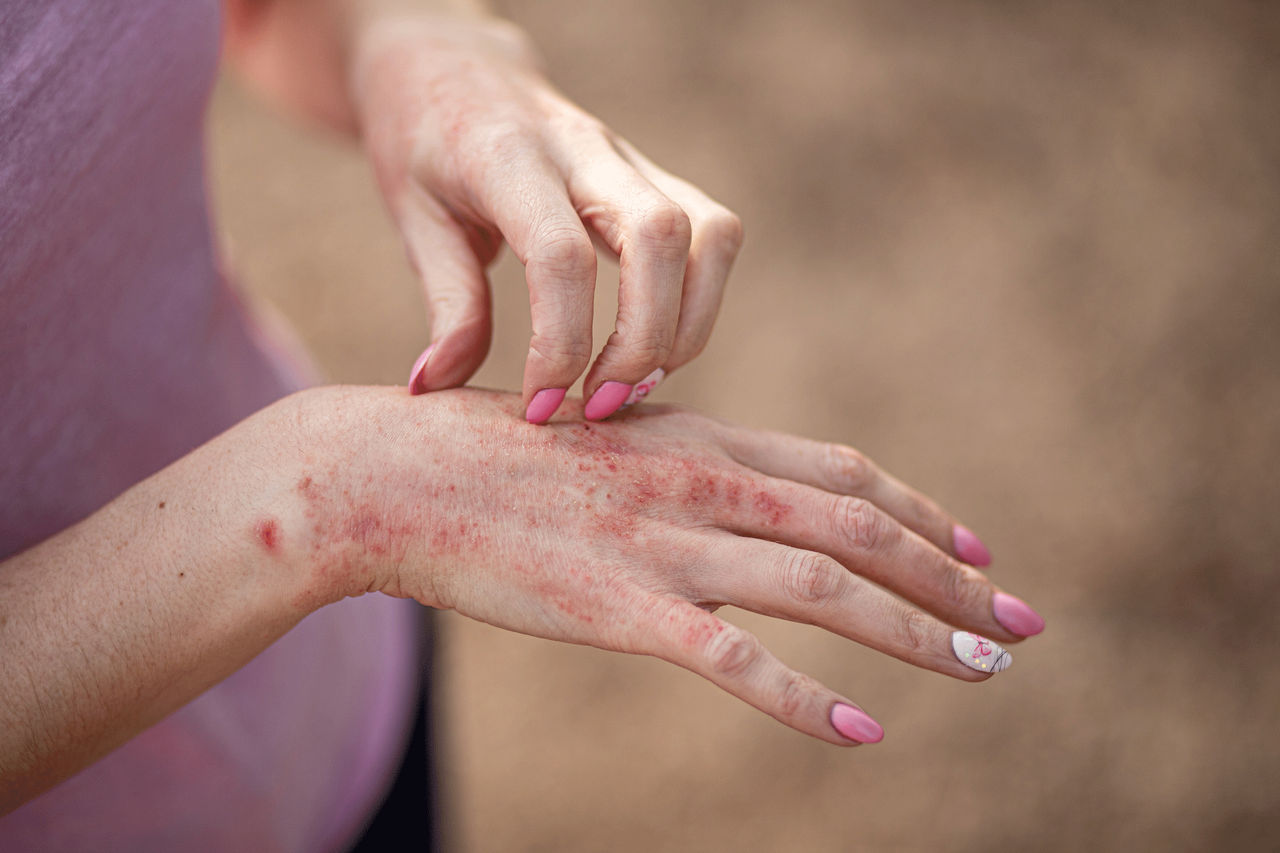What Is Dermatitis?

Keeping your skin hydrated and avoiding allergic triggers can prevent bouts of itchy skin from dermatitis, a group of conditions that can cause inflammation.
Dermatitis includes several conditions that inflames your skin, leaving it feeling dry and itchy. Dermatitis isn’t dangerous or contagious, but it can be uncomfortable and unsightly.
Avoiding triggers can prevent attacks of dermatitis from chemicals, perfumes, or other substances. If avoidance doesn't work, your doctor can prescribe medications to soothe your skin and reduce inflammation.
YOU MIGHT ALSO LIKE: How to Prevent Dry Skin
Types of dermatitis
Common types of dermatitis include:
- Atopic dermatitis (eczema): an inflammatory skin condition that affects up to 30 percent of children and 10 percent of adults. It produces red, itchy rashes on skin.
- Contact dermatitis: irritation caused by an allergic reaction to things like perfume, laundry detergent, plants, or makeup.
- Diaper rash: a familiar skin condition affecting infants. Moisture, chafing, or a reaction to food can cause the rash.
- Seborrheic dermatitis, also called dandruff or cradle cap (in infants): scaly patches on your scalp and other areas of your body that produce a lot of oil (like your nose, eyebrows, and ears).
Who gets dermatitis?
Dermatitis can affect people of any age, but some types appear at certain times of life. For example, atopic dermatitis usually starts during childhood.
You're more likely to get dermatitis if:
- This skin condition runs in your family.
- You have an immune system disorder like HIV.
- You're under a lot of stress.
- You have allergies or asthma.
- You work in a job that exposes you to certain chemicals or metals.
Symptoms of dermatitis
Symptoms can depend on the type you have, but may include:
- Redness
- Itching
- Dry skin
- Rash
- Fluid-filled blisters or solid bumps
- Painful sores
- Crusty, scaly, or flaky skin
How is dermatitis diagnosed?
Your primary care doctor or dermatologist will ask about your symptoms and health history. The visit will include a skin exam to look for dermatitis symptoms, such as redness, flaking, and dryness. The exam should give your doctor enough information to make a diagnosis.
Other tests include:
- Blood tests to look for other causes of the rash
- Allergy patch tests to figure out which substances irritate your skin
- A skin biopsy to determine which type of dermatitis you have
Treatment for dermatitis
Treatments differ based on the type and severity of dermatitis. Your doctor might first recommend that you avoid whatever chemical or other substance is setting off your skin flares.
A few medications suppress the immune system response to reduce inflammation in your skin:
- Calcineurin inhibitors like tacrolimus (such as Astagraf, Prograf) and pimecrolimus (Elidel)
- Corticosteroid pills, creams, and ointments
- Crisaborole (Eucrisa), a phosphodieterase-4 inhibitor
- Biologic drugs like dupilimab (Dupixent)
Phototherapy (light therapy) is a treatment for moderate-to-severe eczema. Exposure to ultraviolet (or UV) light two to three times a week reduces the number of inflammatory cells in your skin.
What you can do
Along with avoiding triggers like chemicals and managing stress, things you can do at home to relieve dermatitis include:
- Apply a moisturizing cream every day after you shower to keep your skin hydrated.
- Take warm, not hot, showers. Heat can dry your skin even more. Pat dry afterward. Never rub.
- Sprinkle colloidal oatmeal or baking soda into a lukewarm bath or add one-half cup of household bleach. Soak in the mixture for five to 10 minutes.
- Use mild, unscented soap, laundry detergent, and cosmetics.
- Try not to scratch. You could introduce bacteria and get an infection. Instead, apply moisturizer to relieve the itch.
Dermatitis is usually manageable with medication and home care, but call your doctor if:
- Your skin is red, warm, or swollen (these are signs of an infection).
- The affected skin is very painful or extremely itchy.
- Blisters form on your skin.
- Dermatitis doesn't go away after at least a week of treatment.
Updated:
May 01, 2023
Reviewed By:
Janet O'Dell, RN